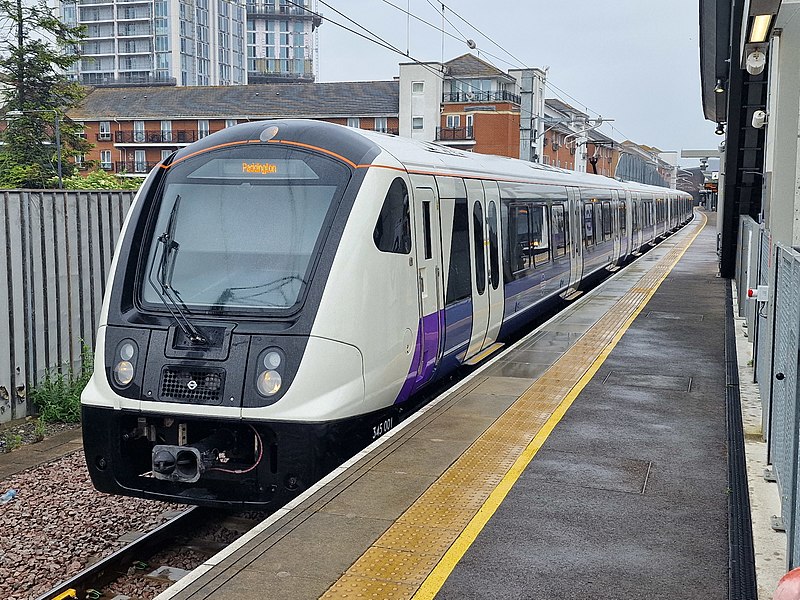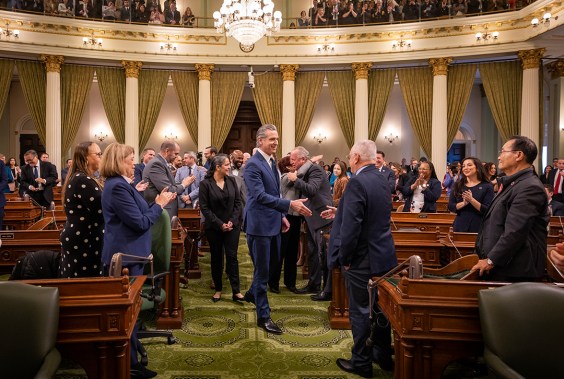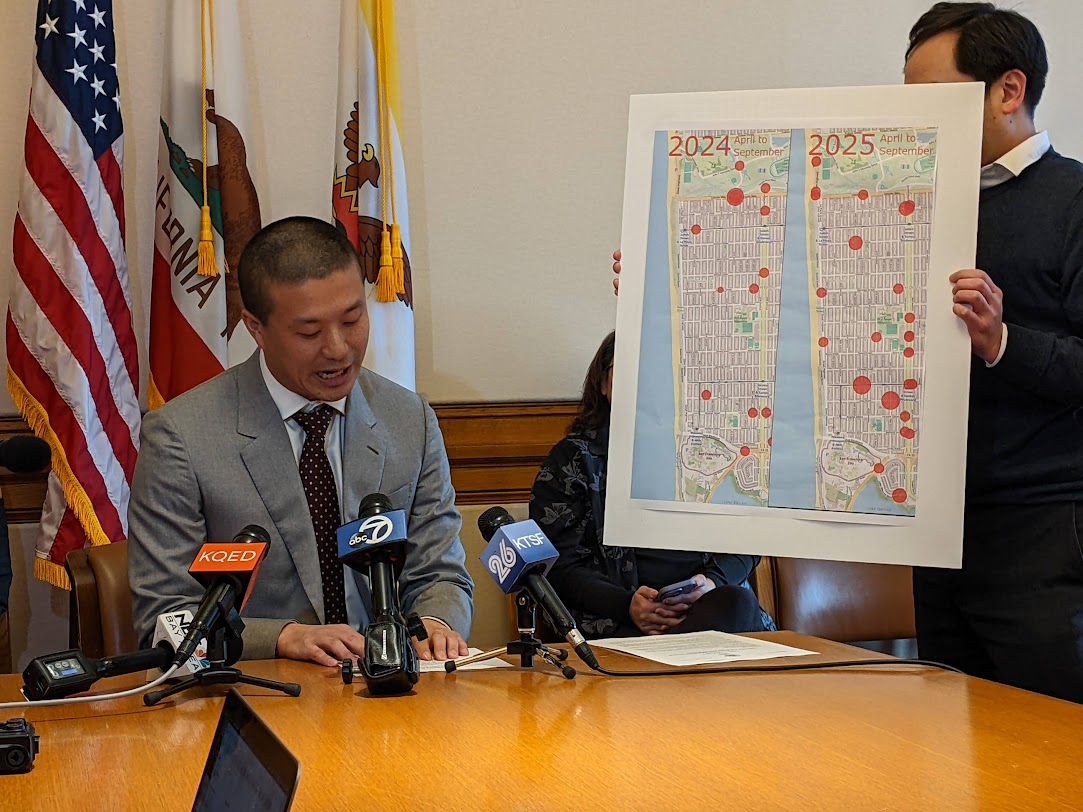Note: GJEL Accident Attorneys regularly sponsors coverage on Streetsblog San Francisco and Streetsblog California. Unless noted in the story, GJEL Accident Attorneys is not consulted for the content or editorial direction of the sponsored content.
The Bay Area is in the middle of the Link21 planning process, led by BART and Capitol Corridor, to design a second transbay tube. The region needs to adapt the program to post-pandemic travel needs, repair historical gaps and harms created by the current system, and learn from long standing international best practices for rail systems that connect urban cores to extended regions.
Over 60 years ago, Bay Area voters approved a plan for the first transbay tube and the BART broad-gauge rail system that carries hundreds of thousands of riders each day. While that system has provided massive benefits to the region, some communities were passed over—sometimes literally—for benefits while suffering disproportionately from poor planning decisions.
In November 2022, transit advocates met at Oakland’s Line51 Brewing to discuss how a second northern transbay rail crossing and related infrastructure could benefit the region and beyond, but also the neighborhoods it serves. Attendees heard from Hella Oakland author Mitchell Schwartz about how the initial BART construction ripped apart West Oakland neighborhoods and bypassed East Oakland communities to primarily benefit whiter and more affluent suburban commuters accessing SF Financial District jobs. Ian Griffiths of Seamless Bay Area spoke about how Link21’s second tube planning can integrate with MTC’s Connected Network regional transportation plan. James Rojas of PlaceIt used his unique community engagement process of tactile play with objects to encourage attendees to envision how these rail investments could relate to surrounding communities. Through these conversations, it became clear that East Bay communities that would host the lions’ share of the infrastructure and construction of this program should benefit equally compared to potential regional and intercity passengers.
Since then, Link21 has proposed more concepts for a potential broad-gauge (legacy BART) or a standard-gauge (think Caltrain, high-speed rail, the new Elizabeth Line in London, Amtrak, or pretty much any other train in Europe or North America.) second transbay rail crossing. In early April 2023, advocates reconvened to consider not just lines on maps drawn by planners and engineers, but what outcomes are important for such a large investment of time and money for the region. Rather than considering the narrow question of what neighborhood gets a station or what technology the trains use, our focus was how can we create greater access for riders across the entire network regardless of whether their home rail station has red or blue trains, or their tracks are narrower or wider.
Out of that conversation came the following principles:
Balance Neighborhood Impacts with Greater Neighborhood Access
Intercity and regional connectivity are important, but locations where major infrastructure upgrades are contemplated (Central Oakland, East Oakland, Richmond) must also benefit in terms of increased regional access. We must not repeat the mistakes of midcentury transportation infrastructure in disrupting communities solely to benefit suburban white collar commuters to Downtown SF. New stations and high levels of service/access must be provided in these locations.
Repair the Harms of BART 1.0 by Adding Infill Stations
Speaking of unfinished business, Link21 should commit to adding an infill station in the San Antonio District of Oakland, regardless of which type of rail is used. The gap between Lake Merritt and Fruitvale BART is the longest in the system’s urban core. The original buildout of BART went past Eastlake and San Antonio in order to prioritize service times to southern and eastern Alameda County suburbs. An infill station around 14th Avenue should be prioritized as part of the Link21 Program. Other BART infill stations could be considered such as 55th Avenue and 51st Street in Oakland. If a regional rail electrical multiple unit (EMU) option is chosen, infill regional rail stations could be added in Berkeley, Richmond, and Oakland as well.
This is especially important as BART faces down post-COVID financial challenges stemming from a drop-off in ridership. Since the explosion in remote work, longer-distance suburb-to-city center trips during peak hours have decreased significantly. Meanwhile, shorter-distance off-peak trips made primarily by service sector workers in the system’s urban core haven’t as much, smoothing out trip demand while requiring more frequency. Better serving these trips with ridership-generating infill stations and frequent all-day service would be both an equity boon and improve the fiscal health of BART in a particularly-dangerous time.
Prioritize Intermodal Transfer near Job Centers
A transfer between regional rail and BART gauge trains must be located near the Oakland Central Business District. This could occur at 14th Street and 980, Jack London or another location. Given Downtown Oakland’s continued job and housing growth, locating the primary intermodal transfer station on the East Bay side in West Oakland or at the Coliseum would be counterproductive. In contrast, there is a stronger argument for shifting the route on the West Bay side to new markets like Mission Bay. The job cluster of medical services, research, and universities near Mission Bay is more likely to continue to need transit in the future.
Maximize the Regional Rail Option with Transfers and Frequent Electric Shuttles
A second transbay crossing will undoubtedly be expensive, so we must make the most of it by maximizing trains per hour in the urban core while facilitating longer-distance travel. The Link21 planning materials sets up a contrast between options that serve core urban travel and options that serve longer distances. But an international model of regional rail supports both purposes with frequent and dense urban core service that also enables seamless longer-distance travel.
The Elizabeth Line’s high capacity and use at 24 trains per hour should be a benchmark for planning. If a regional rail option is selected for a second crossing, the reliability issues of passenger rail running on freight-owned rights of way may require some of those services to transfer at either Coliseum or Richmond in order to maintain schedule and operations for the tube. This will require a high-frequency Electric Multiple Unit (EMU) service to run between Coliseum/Richmond/MacArthur and points south of 4th and King or along a Geary subway to facilitate access to West Bay locations. Such a service can serve intercity riders seeking a rail trip into San Francisco as well as core Bay Area riders looking for fast, frequent service between the inner East Bay and the Peninsula.
Through-Running is a Must
Any option must allow trains to through-run between the Transbay Terminal and the to-be-determined Oakland hub. Terminal stations, where trains stop in a central city area and slowly turn around for a return trip, are an artifact of American commuter railroading that focused on trains serving white collar commute travel and de-emphasized other types of trips.
Through-running opens up more job markets, makes staffing easier, eases operational challenges, and allows more trains to run through a very expensive second tube. Link21 staff should not shy away from through-running options that may subvert expectations. For example, there is no reason why a subway to Geary cannot be a regional rail EMU with connections to Transbay Terminal and on through the second tube to Downtown Oakland, Oakland Coliseum or Richmond.
Shaping the trajectory of the project
The current phase of Link21 planning taking place this year and next is identifying concepts and a business plan for the project. In the same time frame, the Metropolitan Transportation Commission is updating the Regional Transportation Plan using a Connected Network Plan process that is common around the world but new to the Bay Area, intended to focus on service outcomes, and to adapt the region’s transportation plan for post-pandemic conditions.
Ultimately, any alignment for a second tube and related Link21 investments will involve tradeoffs between operations, engineering, financial feasibility, and constructability. But at this early stage, planning for such infrastructure must be based on the needs of riders to access jobs, education and recreation – and not preconceived notions of what color a train is, how wide the tracks are, or what type of person rides it.
If you are interested in learning, organizing and advocacy around the Link21 program with these principles, sign up here.
***
David Ying is a member of the Link21 Equity Advisory Council and a professional urban planner. He is also a member of Californians for Electric Rail, a volunteer organization dedicated to electrifying the state's rail network.






